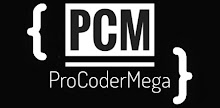SQL stands for Structured Query Language. Its is free and very powerful software application used by a lot of organizations. It is a language which is used to interact with the Relational Database Management System or RDBMS. With its help we can do different operations like create, delete, update, store, retrieve the data and much more from the database. So first of all let's see what is a database.
What is a Database ?
"Database is a collection of data". Yeah that's all. Any kind of data when stored in a collective manner is a database. Let's take an example of a 'School' where all the records like the 'Academic Details', 'Fee Details', 'Student Accommodation Details' and other personal records are stored. This is an example of Database.
There are two types of database-
- Relational Database: In this, the data is stored in the form of tables. Using the rows and column you can store your data in an organized way. It is also known as RDBMS where 'R' stands for "Relational". Example - MYSQL, Oracle.
- Non-Relational Database: In this, the data is not stored in the form of table, instead it is store in the form of "Key-Value Pair". Example - XML, JSON.
What is DBMS ?
DBMS or Database Management System is a software application which is used to manage all the data in the database. With the help of DBMS we can manage huge amount of data, secure our data, manage the data using other programming language(like JAVA as JDBC[Java Database Connectivity]) and do much more. Some of the examples of DBMS are MYSQL, Oracle, MongoDB, PostgreSQL, Microsoft Access and FoxPro.
Types of Structured Query Language
Basically SQL is consists of four different types of languages. They are as follows -
- DDL - Data Definition Language
- DQL - Data Query Language
- DML - Data Manipulation Language
- DCL - Data Control Language
Advantages of MYSQL
- Data Security
- High Performance
- On demand Scalability
Portability
No need of advance coding knowledge
Interactive language
- High Flexibility
- It's free of cost
- Easy to use and handle










1 Comments
This comment has been removed by a blog administrator.
ReplyDelete